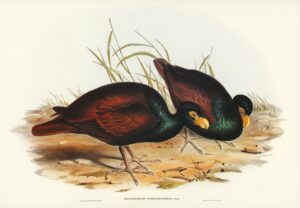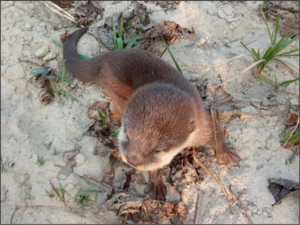Like sharks, venomous snakes tend to get a bad rap. Only an estimated 17% of snake species pose any risk to humans. Bites are usually avoidable. And of the more than 7,000 venomous snake bites each year in the U.S., 57% happen when someone is handling a snake and 28% of those bitten were intoxicated at the time.
However, bites in the wild can and do happen. The World Health Organization estimates that globally, there are 5.4 million snake bites each year. So, which species are the most dangerous, and will you survive if you’re unlucky enough to be bitten?
Because adventurous types have a better-than-average chance of running into snakes in the wild, we’ve put together a comprehensive article outlining best practices to stay safe and live in harmony with venomous snakes.
Venomous or poisonous?
Venom and poison tend to get lumped together, but are very different. Poison must be ingested, absorbed, or inhaled. Venom is injected. In the case of venomous snakes, this happens through hollow fangs.
Only a few snake species, such as the red-necked keelback, are poisonous. This small snake reuses toxins from its main prey, the poisonous Asian common toad. It stores and secretes the toxins from its neck and will offer that part of its body if threatened, hoping the poisonous secretion will drive off a predator. The poison is not dangerous to humans, though we would discourage anyone planning to either lick or eat this snake!

A few snakes are both poisonous and venomous. The red-necked keelback ticks both boxes. Photo: Thomas Brown
Interestingly, this species is also venomous. Though its venom is extremely potent, the red-necked keelback is very reluctant to bite and is rear-fanged, meaning that to envenom a target it needs to chew on it for a while.
The most venomous snakes
Snake venom is modified saliva, designed to quickly immobilize prey, aid digestion, or kill an attacker. Venom toxicity is typically measured using the median lethal dose (LD50), which is the “dose required to kill half the members of a tested population after a specified test duration.” The lower the LD50, the more toxic the venom.
But measuring the LD50 can be challenging. First, researchers must source the venom from the snake. If this is a four-metre King Cobra, as in the video below, then this involves wrestling an incredibly powerful, intelligent snake and inducing it to bite — without getting bitten.
Inland taipan venom is the most toxic
Snake venom toxicity, even among members of one species, varies considerably based on the health of the individual, genetic variation, and environmental factors. Therefore, researchers should source the venom from captive populations and mix it with 0.1% bovine serum albumin in saline (or just with saline) to minimize variability.
Because of this natural variability, a conclusive “world’s most venomous snakes” list is not an exact science. But by using the LD50 ratings of snakes, most lists feature the nine species below:
Inland/Western taipan (Oxyuranus microlepidotus), Australia – 0.025 mg/kg
Reef shallows sea snake (Aipysurus duboisii), tropical waters around Papua New Guinea, Australia, and New Caledonia – 0.044 mg/kg
Eastern brown snake (Pseudonaja textiles), Australia – 0.053 mg/kg
Yellow-bellied sea snake (Hydrophis platurus), tropical oceanic waters – 0.067 mg/kg
Central Ranges taipan (Oxyuranus temporalis), Australia – 0.075 mg/kg
Peron’s sea snake (Hydrophis peronii), tropical waters around Papua New Guinea, Australia, and New Caledonia – 0.079 mg/kg
Coastal taipan (Oxyuranus scutellatus), Australia – 0.099 mg/kg
Many-banded krait (Bungarus multicinctus), China, Taiwan, and Southeast Asia – 0.09 mg/kg
Chinese sea krait (Laticauda semifasciata), western Pacific Ocean – 0.111 mg/kg

Australia’s inland taipan, by some measurements the most venomous snake in the world. Photo: Factanimal.com
There are three main types of snake venom: neurotoxic, hemotoxic, and cytotoxic. Neurotoxic venom attacks the nervous system, disrupting neurotransmitters. Hemotoxic venom enters the bloodstream and attacks blood cells. Cytotoxic venom attacks organs and tissues, causing necrosis. All three types are dangerous, though cytotoxic tends to be less deadly.
The most venomous snakes are not always the most dangerous
Astonishingly, the world’s most venomous snake, the inland taipan, has no recorded fatalities. Scientists have produced antivenom for the species since 1955 and their habitat (the dry inland bush of central and eastern Australia) means that they very rarely come into contact with humans. Even in captivity, this species is relatively calm and unlikely to bite.
The most dangerous snakes tend to be those that occur in rural, populated areas with poor health infrastructure. The most deadly country in terms of snake bites is almost certainly India, with an estimated 58,000 deaths per year between 2010 and 2019. Russell’s viper accounts for over 40% of bite records on autopsy reports during the same period. So it has a strong claim to be the world’s most dangerous snake.
Russell’s viper specializes in hunting rodents. As the old urban myth goes, you’re never more than six feet from a rat, so prey is abundant for the snake where people live. This makes encounters and bites much more likely. When threatened, this viper coils to strike and can launch its head a good distance when doing so.

A Russell’s viper. Photo: Sandilya Theuerkauf
Potency vs dose
The most venomous snakes don’t necessarily deliver the most venom. Snakes can control the amount of venom injected in a bite, and can even dry bite without envenoming the target.
The inland taipan’s venom is extremely potent, but it delivers significantly less venom per bite than most cobra species. The forest cobra, found in central and western Africa, can deliver more than 10 times the volume of venom, a whopping 1,100mg or more.
Another extremely dangerous African snake, the black mamba, can inject up to 12 times the lethal dose for humans in a single bite and tends to strike rapidly and repeatedly. To make matters worse, its venom is very fast-acting. Without antivenom, you’ll be dead in 20 minutes. Even with antivenom, survival isn’t guaranteed.
Antivenom
If antivenom is available and quickly administered, survival rates for snake bites are high. Unfortunately, antivenom can be hard to come by, particularly in the world’s poorest regions where snake bites are most common. Antivenom often needs refrigeration and has a shelf life, so needs periodic replacement. Still, even a bite from one of the world’s most venomous snakes without antivenom isn’t necessarily a death sentence.
Between 2000 and 2003, a hospital in Hanoi, Vietnam admitted 60 patients with bites from the many-banded krait, one of the world’s most venomous species. No antivenom was available at the time and the mortality rate was only 7%. Yet symptoms were severe, 87% of patients needed mechanical ventilation for over a week, and 85% suffered neuromuscular issues like limb paralysis.
An unfair fight
Like describing a body of water as “shark-infested” (it’s their habitat, they don’t infest it), it has become commonplace to describe certain snakes as “aggressive”. Snakes aren’t aggressive, but they can be defensive. Most snakes will slither away as soon as they sense vibrations from an approaching human. However, if you manage to cut off a snake from its escape route, or encounter an ambush predator that relies on its camouflage for protection, then you can inadvertently trigger defensive behavior that many people mistake for aggression.
Even with species that more actively hunt, bite data suggests defensive bites or cases of mistaken identity. Most of those 60 krait bite victims in northern Vietnam were agricultural workers, and most bites occurred at night, either in the rice paddies or at home.

Most snake species are harmless, including this beautiful oriental whipsnake. Photo: Martin Walsh
Fear factor and venomous snakes
Most of us seem to be hard-wired to find snakes scary, an instinctive primordial fear that researchers have suggested is a result of evolutionary pressures. Early humans who could quickly spot and identify snakes may have been more likely to survive, and thus pass on their genes. This mistrust of snakes has manifested in religion, with a snake tempting Eve into committing original sin in the Bible, and everyday metaphors such as referring to someone we don’t trust as “a snake in the grass”.
This ingrained fear has been extremely bad news for snakes. People kill snakes on sight in many countries, no matter the species. The importance of snakes in a healthy ecosystem is often completely ignored and humans treat them as a threat to be eliminated.
In human-wildlife conflict, wildlife inevitably comes out on the losing side.
Snake FAQ
What is the world’s deadliest snake?
The inland taipan has the most potent venom but lives in a remote part of Australia and has never killed anyone. Meanwhile, the Russell’s viper in India has milder venom but has killed tens of thousands of people. By that standard, it may be considered the most deadly.
Are garter snakes venomous?
In the early 2000s, scientists discovered to their surprise that garter snakes — long considered totally harmless — do produce a mild neurotoxic venom. They lack fangs, but if you stick your hand in a garter snake’s mouth, the rear teeth may produce some swelling. Still, nothing to worry about.
Are there venomous snakes in Europe?
Yes. All are members of the viper family. The most common one, the European adder, even lives in the UK. These are not the most dangerous species in the world, but their bites can still be fatal.
Can you suck out snake venom from a bitten victim?
No! Trying to suck out snake venom can harm both the victim and the person trying to help. This urban myth has existed for a long time, but it doesn’t hold up to medical science. Sucking a snake wound can damage nerves and lead to infection, as well as potentially spreading poison to someone else.
How can you tell if a snake is venomous?
It’s not easy, especially because you want to avoid getting too close. Many people are familiar with the old adage for telling a coral snake (venomous) from its similar cousin the king snake (non-venomous): “Red touching black, safe for Jack. Red touching yellow, kill a fellow.” As for rattlesnakes, they have a telltale rattle on the end of their tails. Many pit vipers have a triangular head, compared to the rounded ones of their non-venomous relatives. However, that’s not 100 percent reliable. The best suggestion is the same as with unfamiliar mushrooms: If in doubt, avoid them.
Are sea snakes dangerous?
As we listed above, three of the nine most toxic snakes in the world are sea snakes. However, they have tiny fangs and a placid temperament. Fishermen are most at risk when they try to clear them from nets.
What should you do if bitten by a venomous snake?
A snake bite requires emergency medical treatment, and if possible, antivenom. The first choice should be going to a hospital. That’s true even for non-venomous bites, which could still cause infection. Otherwise, victims should avoid moving the bitten limb to slow the venom’s spread. They should also take note of the snake’s appearance and location to help doctors identify the species, as well as the time of the bite. Victims can take Tylenol to help with pain, but not painkillers like aspirin or ibuprofen, which thin the blood.
Is a mongoose immune to snake venom?
No. They do have some inherent resistance to venom, but can still die if bitten. Their snake-fighting ability is more about quick reflexes. Cobras, the snakes that they usually evade, strike comparatively slowly. Many pit vipers, such as rattlesnakes, strike much more quickly and have killed mongooses in captivity. Fortunately for the mongoose, there are no rattlesnakes in its natural habitat.
Have you had an encounter with a venomous snake? Tell us about it in the Comments section.






